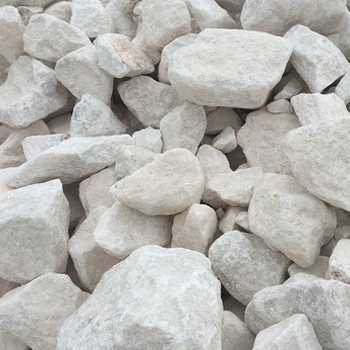گچ یک ماده معدنی سولفات نرم است که از سولفات کلسیم دی هیدرات، با فرمول شیمیایی CaSO4·2H2O تشکیل شده است. به طور گسترده استخراج می شود و به عنوان کود و به عنوان ماده اصلی در بسیاری از اشکال گچ، تخته سیاه / گچ پیاده رو و دیوار خشک استفاده می شود. گونهای از گچ ریزدانه سفید یا رنگآمیزی، به نام آلاباستر، توسط بسیاری از فرهنگها از جمله مصر باستان، بینالنهرین، روم باستان، امپراتوری بیزانس و آلاباسترهای ناتینگهام در انگلستان قرون وسطی برای مجسمهسازی استفاده شده است. گچ نیز به صورت بلورهای نیمه شفاف سلنیت متبلور می شود. به عنوان یک کانی تبخیری و به عنوان محصول هیدراتاسیون انیدریت تشکیل می شود.
مقیاس سختی معدنی Mohs، گچ را به عنوان مقدار سختی 2 بر اساس مقایسه سختی خراش تعریف می کند.
مقادیر تجاری گچ در شهرهای Araripina و Grajaú در برزیل یافت می شود. در پاکستان، جامائیکا، ایران (دومین تولیدکننده بزرگ جهان)، تایلند، اسپانیا (تولیدکننده اصلی در اروپا)، آلمان، ایتالیا، انگلستان، ایرلند و کانادا و ایالات متحده آمریکا. معادن روباز بزرگ در بسیاری از نقاط از جمله فورت دوج، آیووا، که بر روی یکی از بزرگترین ذخایر گچ در جهان قرار دارد، و گچ سیتی، کالیفرنیا، ایالات متحده، و کوتای شرقی، کالیمانتان، اندونزی واقع شده اند. چندین معدن کوچک نیز در مکان هایی مانند Kalannie در استرالیای غربی وجود دارد، جایی که گچ به خریداران خصوصی برای افزودن کلسیم و گوگرد و همچنین کاهش سمیت آلومینیوم در خاک برای اهداف کشاورزی فروخته می شود.
بلورهای گچ به طول 11 متر (36 فوت) در غارهای معدن نایکا در چیهواهوا، مکزیک پیدا شده است. کریستال ها در محیط طبیعی بسیار نادر و پایدار غار رشد کردند. دما در 58 درجه سانتیگراد (136 درجه فارنهایت) باقی ماند و غار پر از آب غنی از مواد معدنی بود که باعث رشد بلورها شد. بزرگترین آن کریستال ها 55 تن (61 تن کوتاه) وزن دارد و حدود 500000 سال قدمت دارد.
اگر قصد استخراج این ماده معدنی سولفات نرم را دارید، از ابتدا تا شروع کارخانه همیشه در قسمت ماشین آلات استخراج همراه شما هستیم.




